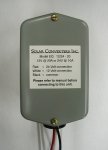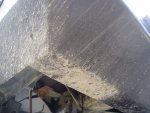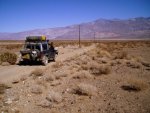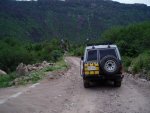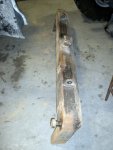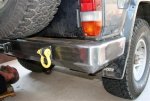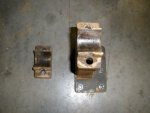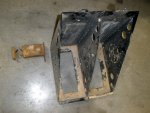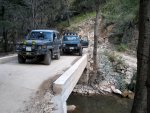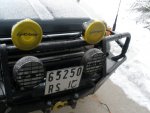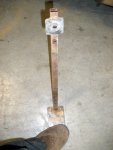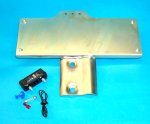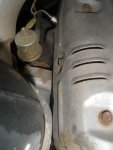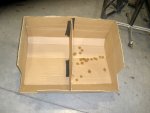CanuckMariner/Nomad
Love having fun 😊 in the 🌞 by the ⛵ and the ⏳
Battery Management System
I was starting to think I needed to figure this out, as I had a number of 12 V applications (CB, Ham, Stereo, etc) which only came in 12V so I had to address this quickly before I did any damage to my 2 new Optima blue tops.
Luckily there is a company (http://www.solarconverters.com) [nothing to do with the sun, just the name] here in Kanukistan (actually upper Kanckistan) which made a device which had three wires one positive, one negative and one between the two batteries which measure the voltage about every second and drew power from the battery with the most voltage. This device they call a 12 / 24 V @ 20 Amps Battery Equalizer and DC Autotransformer and goes for about $200, yes it seems expensive but then so are the two Optimas and why not keep them in great condition so the truck will start when you want it to. It essentially keeps both batteries the same so that the alternator keeps them both charged the same. Neither one is discharged more than the other. The two additional leads go to a 6 or 12 fuse panel (Blue Sea Systems) and then the applications hook to this. By the way, this device is totally water proofed with a seal and has fuses to protect it from damage. This was a very neat installation.
Initially I attached the solar converter device to the side of the passenger seat and a mickey mouse fuse panel from NAPA and soon had a bird's nest of wires under there that I knew if I didn't fix this I would have a fire or short out when I filled with water. So I once again removed the seats and carpet etc. and put all the wiring in a loom and directed it to the back of the centre console where I had room as my truck didn't have the rear heater/A/C controls, for the Blue Sea fuse panel. The solar converter device was moved to behind the passenger air vent so it was high enough not to short out.
So now, I have enough fused spots for my CB, Ham, ERC, Stereo, 12V aux plugs (front/back), etc. Given that very few things are on at once (CB/Ham - <10 AMPS; 12 V Aux < 10AMPS) that draw more than 20 AMPS, I can't see any problem,. The fuse panel is rated for up to 100 amps max, so the multi-fused solar converter can handle is all. I also mounted the two lights (green/red) indicating all is good or not, in a position where I can see.
I also installed an ERC (Electronic Rust Control) system called CounterAct from Canadian Tire, which had its origin in OZ. A cousin has a similar system on his airplane for over 20 years with no rust. This unit draws such little power (.55 AMPS) and is on all the time to stop NOMAD from loosing any more of her nickers (more on that in future installments).
As we are in the electrical mode, I also rewired by FET LandMaster hi/lo auxiliary lights (JDM - now defunct but I think IPF bought them as they look so similar) from 12V (I was surprised) to 24V which meant changing the bulbs and wiring and relays and a lighted Toyota switch. Won't bore you with how this was done as I am sure enough of you have wired in lights before.
Next was the CB, as they are relatively cheap and easy to get. Ever notice that there are very limited CB stores in towns and finding anyone who knows anything about them is even harder! I contacted Cobra and Wilson directly to make sure it would all match and work as desired. I got a used Cobra All-In-The-Handset 75 WX ST from eBay for $60 and bought a Wilson Trucker 2000 as I was told that it would improve the range. I chose the Cobra as it needed little room and I could find some obscure spot (under the trani console) to mount it and the hand set had all the controls so looking down for settings.
I also posted a photo of the No Ground Antenna Kit I am hoping to get from Wilson..soon? Got it! Now to try it out after the great freeze!
The microphone bracket I attached to a steel bracket I fabbed during my time with the rear bumper fabrication.
The antenna was mounted on the ARB Bull bar to an ARB antenna bracket. Had to remove the plastic/rubber grommet from the antenna kit to get a good ground. However, I have since found out why my range is still rather limited, courtesy of Mark Weiss (Gadget Guy) at SnT 08 who suggested I contact Wilson regarding a No Ground Plane. Since then, Wilson has confirmed they had a product to fix this on trucks with no metal roof (remember, mine is FRP) like tractors, etc. but didn't sell enough so took them off their website. Well they are sending me one and perhaps two for my friend (Targa88 - he bought one on my recommendation) as the coil has to be above the rood line to work. They didn't mention that when I bought it as they assume it will be mounted on the mirrors of a 18 wheeler. We are currently waiting for them to arrive.
I was starting to think I needed to figure this out, as I had a number of 12 V applications (CB, Ham, Stereo, etc) which only came in 12V so I had to address this quickly before I did any damage to my 2 new Optima blue tops.
Luckily there is a company (http://www.solarconverters.com) [nothing to do with the sun, just the name] here in Kanukistan (actually upper Kanckistan) which made a device which had three wires one positive, one negative and one between the two batteries which measure the voltage about every second and drew power from the battery with the most voltage. This device they call a 12 / 24 V @ 20 Amps Battery Equalizer and DC Autotransformer and goes for about $200, yes it seems expensive but then so are the two Optimas and why not keep them in great condition so the truck will start when you want it to. It essentially keeps both batteries the same so that the alternator keeps them both charged the same. Neither one is discharged more than the other. The two additional leads go to a 6 or 12 fuse panel (Blue Sea Systems) and then the applications hook to this. By the way, this device is totally water proofed with a seal and has fuses to protect it from damage. This was a very neat installation.
Initially I attached the solar converter device to the side of the passenger seat and a mickey mouse fuse panel from NAPA and soon had a bird's nest of wires under there that I knew if I didn't fix this I would have a fire or short out when I filled with water. So I once again removed the seats and carpet etc. and put all the wiring in a loom and directed it to the back of the centre console where I had room as my truck didn't have the rear heater/A/C controls, for the Blue Sea fuse panel. The solar converter device was moved to behind the passenger air vent so it was high enough not to short out.
So now, I have enough fused spots for my CB, Ham, ERC, Stereo, 12V aux plugs (front/back), etc. Given that very few things are on at once (CB/Ham - <10 AMPS; 12 V Aux < 10AMPS) that draw more than 20 AMPS, I can't see any problem,. The fuse panel is rated for up to 100 amps max, so the multi-fused solar converter can handle is all. I also mounted the two lights (green/red) indicating all is good or not, in a position where I can see.
I also installed an ERC (Electronic Rust Control) system called CounterAct from Canadian Tire, which had its origin in OZ. A cousin has a similar system on his airplane for over 20 years with no rust. This unit draws such little power (.55 AMPS) and is on all the time to stop NOMAD from loosing any more of her nickers (more on that in future installments).
As we are in the electrical mode, I also rewired by FET LandMaster hi/lo auxiliary lights (JDM - now defunct but I think IPF bought them as they look so similar) from 12V (I was surprised) to 24V which meant changing the bulbs and wiring and relays and a lighted Toyota switch. Won't bore you with how this was done as I am sure enough of you have wired in lights before.
Next was the CB, as they are relatively cheap and easy to get. Ever notice that there are very limited CB stores in towns and finding anyone who knows anything about them is even harder! I contacted Cobra and Wilson directly to make sure it would all match and work as desired. I got a used Cobra All-In-The-Handset 75 WX ST from eBay for $60 and bought a Wilson Trucker 2000 as I was told that it would improve the range. I chose the Cobra as it needed little room and I could find some obscure spot (under the trani console) to mount it and the hand set had all the controls so looking down for settings.
I also posted a photo of the No Ground Antenna Kit I am hoping to get from Wilson..soon? Got it! Now to try it out after the great freeze!
The microphone bracket I attached to a steel bracket I fabbed during my time with the rear bumper fabrication.
The antenna was mounted on the ARB Bull bar to an ARB antenna bracket. Had to remove the plastic/rubber grommet from the antenna kit to get a good ground. However, I have since found out why my range is still rather limited, courtesy of Mark Weiss (Gadget Guy) at SnT 08 who suggested I contact Wilson regarding a No Ground Plane. Since then, Wilson has confirmed they had a product to fix this on trucks with no metal roof (remember, mine is FRP) like tractors, etc. but didn't sell enough so took them off their website. Well they are sending me one and perhaps two for my friend (Targa88 - he bought one on my recommendation) as the coil has to be above the rood line to work. They didn't mention that when I bought it as they assume it will be mounted on the mirrors of a 18 wheeler. We are currently waiting for them to arrive.
Attachments
Last edited:

